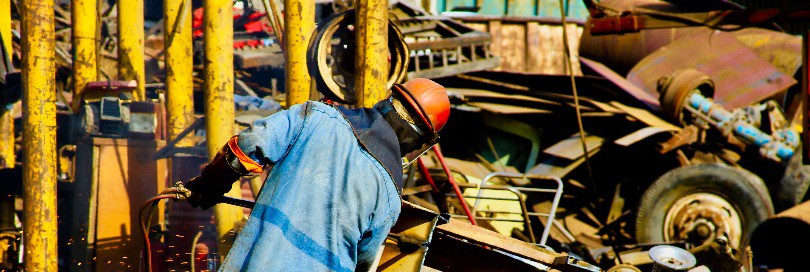- Case law
Teismų praktika: importuotos prekės ar atliekos?

Photo by Jessica Palomo on Unsplash

Photo by Jessica Palomo on Unsplash
OR
Continue reading this article
Sign up and enjoy free access to an article of your choice!
Aktualiame Lietuvos muitinės pranešime informuojama apie naujai įsigytas mobilias rentgeno sistemas, kurios, be kita ko, skirtos sankcionuotų prekių kontrolei. Augančios muitinės kontrolės galimybės, … tikėtina, lems dar daugiau nustatytų pažeidimų. Kokios baudos skiriamos už tarptautinių sankcijų pažeidimus? Tai puikiai atsiskleidžia vien tik iš šio mėnesio Lietuvos muitinės pranešimų ir teismų praktikos: dešimtimis milijonų skaičiuojamos baudos verslui, prekių konfiskavimas, prekių neišleidimas, taip pat baudos ir muitinės tarpininkų atstovams kaip fiziniams asmenims. Akivaizdu, kad rizika didžiulė ir jos valdymui bei atitikties užtikrinimui būtina skirti ypatingą dėmesį. Apibendrinkime ir apžvelkime šio mėnesio su sankcijomis ir baudomis susijusias aktualijas.
Aktualiame Lietuvos muitinės pranešime informuojama apie naujai įsigytas mobilias rentgeno sistemas, kurios, be kita ko, skirtos sankcionuotų prekių kontrolei. Augančios muitinės kontrolės galimybės, tikėtina, lems dar daugiau nustatytų pažeidimų. Kokios baudos skiriamos už tarptautinių sankcijų pažeidimus? Tai puikiai atsiskleidžia vien tik iš šio mėnesio Lietuvos muitinės pranešimų ir teismų praktikos: dešimtimis milijonų skaičiuojamos baudos verslui, prekių konfiskavimas, prekių neišleidimas, taip pat baudos ir muitinės tarpininkų atstovams kaip fiziniams asmenims. Akivaizdu, kad rizika didžiulė ir jos valdymui bei atitikties užtikrinimui būtina skirti ypatingą dėmesį. Apibendrinkime ir apžvelkime šio mėnesio su sankcijomis ir baudomis susijusias aktualijas.
Cheminių medžiagų registracijos, įvertinimo, autorizacijos ir apribojimų (REACH) reglamentas yra pagrindinė ES priemonė, skirta apsaugoti žmonių sveikatą ir aplinką nuo cheminių medžiagų keliamų … pavojų. Šis teisės aktas nustato cheminių medžiagų registravimo pareigą importuotojui. Tačiau importuotojo ir importo apibrėžimai pagal REACH reglamentą nesutampa su muitinės terminologija. Straipsnis apžvelgia neatitikimų pasekmes.
Dr. David Savage
Cheminių medžiagų registracijos, įvertinimo, autorizacijos ir apribojimų (REACH) reglamentas yra pagrindinė ES priemonė, skirta apsaugoti žmonių sveikatą ir aplinką nuo cheminių medžiagų keliamų pavojų. Šis teisės aktas nustato cheminių medžiagų registravimo pareigą importuotojui. Tačiau importuotojo ir importo apibrėžimai pagal REACH reglamentą nesutampa su muitinės terminologija. Straipsnis apžvelgia neatitikimų pasekmes.
Dr. David Savage
Verslas kaupia pasienio anglies dioksido korekcinio mechanizmo (CBAM) ketvirtinių ataskaitų teikimo patirtį. Apie tai, kokia ji, kalbamės su Jurgita Skairiene, besirūpinančia UAB "Yukon Advanced … Optics Worldwide" importuojamų prekių atitinkamomis ataskaitomis.
Jurgita Skairienė
Verslas kaupia pasienio anglies dioksido korekcinio mechanizmo (CBAM) ketvirtinių ataskaitų teikimo patirtį. Apie tai, kokia ji, kalbamės su Jurgita Skairiene, besirūpinančia UAB "Yukon Advanced Optics Worldwide" importuojamų prekių atitinkamomis ataskaitomis.
Jurgita Skairienė
Pagal LR Tarptautinių sankcijų įstatymą Lietuvoje tarptautinės sankcijos taikomos tiesiogiai. Tai tarptautinės sankcijos, įtvirtintos ES teisės aktais, JT, kitų organizacijų (pvz. Europos Saugumo … ir Bendradarbiavimo Organizacijos), kurių nare/ dalyve yra Lietuva. Sankcijų nustatyti reikalavimai yra privalomi visiems - nesvarbu, ar asmuo užsiima individualia veikla, ar yra MB, UAB ar tai didžiulė verslo korporacija, tarptautinių sankcijų nustatyti draudimai ir pareigos galioja visiems. Vykdant sankcijų nustatytus reikalavimus, svarbu patikrinti savo verslo partnerius ir tokiu būdu užsitikrinti, kad su jais sudarydami sandorius nepažeidžiate sankcijų.
Lina Taletavičiūtė-Misiūnienė
Pagal LR Tarptautinių sankcijų įstatymą Lietuvoje tarptautinės sankcijos taikomos tiesiogiai. Tai tarptautinės sankcijos, įtvirtintos ES teisės aktais, JT, kitų organizacijų (pvz. Europos Saugumo ir Bendradarbiavimo Organizacijos), kurių nare/ dalyve yra Lietuva. Sankcijų nustatyti reikalavimai yra privalomi visiems - nesvarbu, ar asmuo užsiima individualia veikla, ar yra MB, UAB ar tai didžiulė verslo korporacija, tarptautinių sankcijų nustatyti draudimai ir pareigos galioja visiems. Vykdant sankcijų nustatytus reikalavimus, svarbu patikrinti savo verslo partnerius ir tokiu būdu užsitikrinti, kad su jais sudarydami sandorius nepažeidžiate sankcijų.
Lina Taletavičiūtė-Misiūnienė
Straipsnio autoriai dalinasi savo asmenine patirtimi, susijusia su ES pasienio anglies dioksido korekcinio mechanizmo (angl. CBAM) taikymo pradžia. Airijoje dirbantis David Savage aptaria iššūkius, … su kuriais susiduria mažų ir vidutinių įmonių (MVĮ) sektoriaus importuotojai, o Belgijoje dirbanti prekybos atitikties užtikrinimo specialistė Svitlana Siurik pasakoja apie savo patirtį iš didelės tarptautinės bendrovės perspektyvos.
Dr. David Savage , Svitlana Siurik
Straipsnio autoriai dalinasi savo asmenine patirtimi, susijusia su ES pasienio anglies dioksido korekcinio mechanizmo (angl. CBAM) taikymo pradžia. Airijoje dirbantis David Savage aptaria iššūkius, su kuriais susiduria mažų ir vidutinių įmonių (MVĮ) sektoriaus importuotojai, o Belgijoje dirbanti prekybos atitikties užtikrinimo specialistė Svitlana Siurik pasakoja apie savo patirtį iš didelės tarptautinės bendrovės perspektyvos.
Dr. David Savage , Svitlana Siurik
* Mandatory fields
By signing up you agree to the Terms of Use and Privacy Policy
or Sign up
Already have an account? Login here
Already have an account? Login here
or Sign up
Comments ()
To post a comment you need to